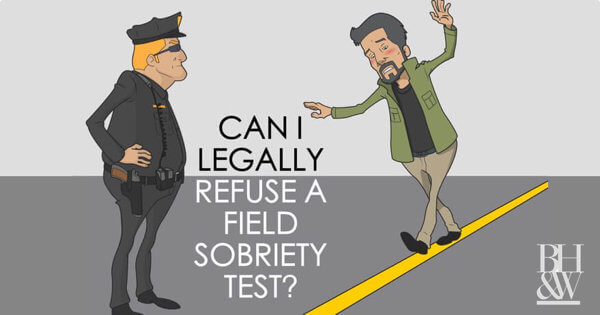Causation Difficult to Prove In DWI Intoxication Manslaughter Case | Fort Worth DWI Attorneys
 One of the key issues in any criminal case is causation. In order to be found guilty of a crime, a defendant’s actions must be found to have been the cause of the criminal act. While causation may seem like a simple thing to prove, causation may depend as much on the actions of the victim as on the actions of the defendant.
One of the key issues in any criminal case is causation. In order to be found guilty of a crime, a defendant’s actions must be found to have been the cause of the criminal act. While causation may seem like a simple thing to prove, causation may depend as much on the actions of the victim as on the actions of the defendant.
Saenz v. State (14th Court of Appeals, August 2015)
FACTS: Monika Saenz was driving her truck around 3:00 a.m. when she struck Jose Torres, Jr., killing him. Blood drawn over an hour after the accident yielded a blood alcohol concentration (BAC) of .172 for Saenz. The autopsy of Torres determined that his BAC was also .172 at the time of the accident and that he had used marijuana and cocaine prior to his death.
Saenz was convicted of intoxication manslaughter and accident involving injury or death. There was no question as to whether Saenz’s truck hit Torres. Saenz’s only defense was concurrent causation: If Torres’ conduct was clearly sufficient to produce the accident that resulted in his death, and Saenz’s conduct was clearly insufficient to produce that result, then Saenz should be acquitted under the theory of concurrent causation.
Saenz pointed to many features of Torres’ conduct that were sufficient to cause the accident. He was walking in the road in dark clothes while intoxicated in the middle of the night; there was no evidence that Saenz’s car ever left the roadway; Torres was walking on the wrong side of the road; and Saenz was not speeding at the time of the accident. Saenz’s position was that her driving while intoxicated was insufficient to cause Torres’ death because even a sober driver would have struck and killed Torres given his conduct.
As part of her concurrent causation defense, Saenz attempted to admit evidence of Torres’ .172 BAC. However, the medical examiner refused to state his opinion that Torres’ .172 BAC would have affected his normal use of physical or mental faculties. As a result, the trial court did not allow admission of the evidence regarding Torres’ BAC.
On appeal, the Texas Fourteenth Court of Appeals questioned why the medical examiner would refuse to concede that a BAC of more than twice the legal limit for driving may have affected Torres’ use of his mental or physical faculties. Furthermore, the Court noted that the standard for public intoxication is that an individual is intoxicated to the degree that he may endanger himself or others. According to the Court, the evidence of Torres’ .172 BAC may have led the jury to conclude that Torres was a danger to himself while walking in the middle of the road in the dark. Further, the Court held, the BAC evidence might have provided a possible explanation to the jury for why Torres failed to move from the roadway when the vehicle appeared.
After finding that the evidence of the victim’s BAC should have been admitted, the Court addressed the question of whether the failure to admit had harmed Saenz’s case. According to the Court, Torres’ BAC evidence was essential Saenz’s defense, and excluding the evidence denied Saenz the opportunity to properly present her concurrent causation defense. Because the Court determined that exclusion of evidence of the victim’s BAC was error that may have contributed to the conviction or punishment, the Court reversed the conviction for intoxication manslaughter and remanded the case for a new trial.
This case illustrates the complexity of the current causation defense, which is used in cases other than criminal cases, particularly property insurance cases. A Fort Worth Criminal Defense Attorney will be familiar with the concurrent causation defense and may be able to obtain an acquittal for his or her client by showing that the criminal act would have occurred even if the defendant had done nothing wrong because the victim’s conduct would have caused it.










